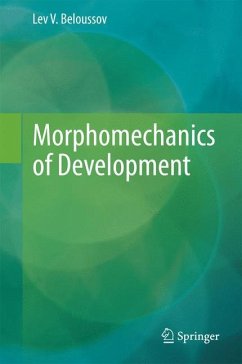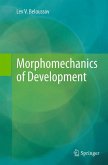This book outlines a unified theory of embryonic development, assuming morphogenesis to be a multi-level process including self-organizing steps while also obeying general laws. It is shown how molecular mechanisms generate mechanical forces, which in the long run lead to morphological changes.
Questions such as how stress-mediated feedback acts at the cellular and supra-cellular levels and how executive and regulatory mechanisms are mutually dependent are addressed, while aspects of collective cell behavior and the morphogenesis of plants are also discussed. The morphomechanical approach employed in the book is based on the general principles of self-organization theory.
Questions such as how stress-mediated feedback acts at the cellular and supra-cellular levels and how executive and regulatory mechanisms are mutually dependent are addressed, while aspects of collective cell behavior and the morphogenesis of plants are also discussed. The morphomechanical approach employed in the book is based on the general principles of self-organization theory.
"'Morphomechanics of Development' is a profound conceptual book focused on the basic principles of biological morphogenesis. ... The book is an important event in the field of developmental biology and, in general, of the foundations of theoretical biology. Its style is clear and logical, which will make it a good complementary textbook for teaching fundamental biological principles. It is strongly recommended to everybody who is interested in biological morphogenesis and its theoretical basis." (Abir U. Igamberdiev, BioSystems, Vol. 132-133, June, 2015)








